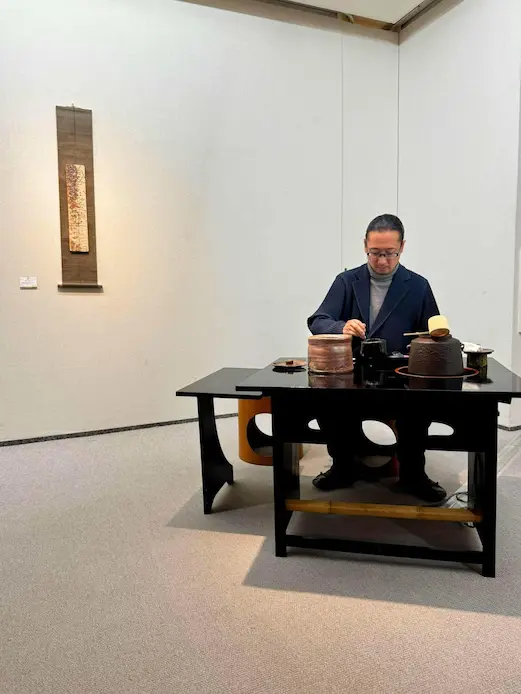“The exhibition Kato Kobei the 7th and Ryotaro Kato: father and son” was held at Nihonbashi Mitsukoshi in Tokyo from 12th to 17th of March 2025. This is special anniversary year for Kobei-gama. The father Kato Kobei the 8th will be 80 years old and his son Ryotaro Kato will be 50 years old in this year. They held this the first father and son exhibition in five years. They do not usually talk much about their creations each other and they exhibited about 70 pieces of work in adjacent venues.Kobei Kato the 7th concentrates of Persian pottery, and Ryotaro Kato concentrates of Mino pottery. Ryotaro Kato was interviewed in the space between two venues. (Interviewer/Editor: Yuko Tsuruoka)
His father’s blue, Ryotaro’s blue
It has been 5 years to hold the first exhibition of father and son at Nihonbashi Mitsukoshi since the last one was held in 2016. The art exhibition gallery was divided into two spaces. The left space was used for my father, Kobei Kato’s works and the right space was used for my own works. In my father’s place, there were a meter-wide lusterware wall object, large plates and Japanese sake vessels with precisely drawn letters and figures and more. The lusterware, densely painted with exotic patterns, was inherited from my grandfather, Takuo Kato. In addition to these lusterwares, a variety of works were exhibited, adding his youth elements, such as the “Baku” series, which uses glazes such as Sansai, russet, and indigo blue, the “Futouko” in Persian blue, and the lusterware “Kiramon” series. In a message for this exhibition, my father said, “The way of pottery continues on and on, and I feel like I am walking through the mist, wondering whether this way is spiral, circuit, or just an endless straight road.” My father turned 80 years old in this year, but he continues to energetically create his works by fusing the Persian pottery techniques he inherited from his father Takuo and the objects he has been creating since his youth, just like a spiral.
The father creates gorgeous Persian potters and the son creates traditional Mino potters. Their styles are opposite, but I think the customer enjoyed our contrasting and different styles together. I also think that the exhibition was able to show the family traditional motto of Kobei-gama, which each generation creates a different style of work. Kobei-gama has been well known as a blue and white porcelain petter called “Sometsuke” from the first generation, but this time, the exhibition was held using the common “cobalt blue” by two generations as my father’s Aisai blue and my Rurikuro blue. So the visitors could feel the lineage of Kobei-gama’s generations and its history.
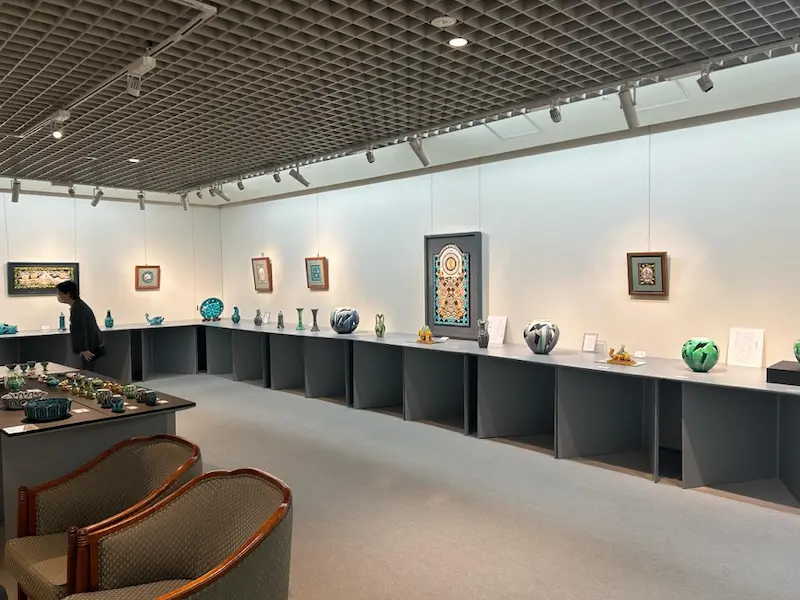
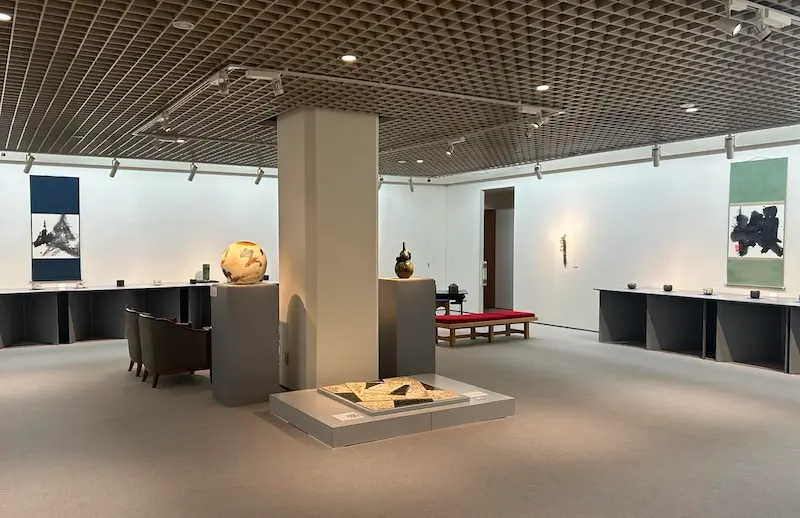
From Nagoya, Singapore to Tokyo in my exhibition space
I combined calligraphy and objects with the diverse expressions of tea bowls as the main theme. I placed Shino white and Setoguro black, which are “Shin” as my main theme of Shin-gyo-sho which express the center of surroundings. Then Oribe green and Rurikuro blue black as surroundings of main objects called “Gyo-sho”. Among my variety of my works, the visitors were especially interested in Oyohen yellow and Ruriguro blue black. The objects and ceramic walls displayed in the center, they were reconstructed from the “Hanpaku Memorial Exhibition” at the Furukawa Museum of Art. I was very glad that people from Tokyo could see my masterpieces on such a great stage.
Since last fall, I have held solo exhibitions in various places, including Nagoya and Singapore, and many visitors came to the exhibition in Tokyo as well. Some people knew about my work on Instagram and saw the real works for the first time. And I was happy to meet them. In addition, important people in the tea ceremony and pottery world came and gave me encouraging words. I am truly grateful for the opportunity to have a dialogue through tea bowls in various places.
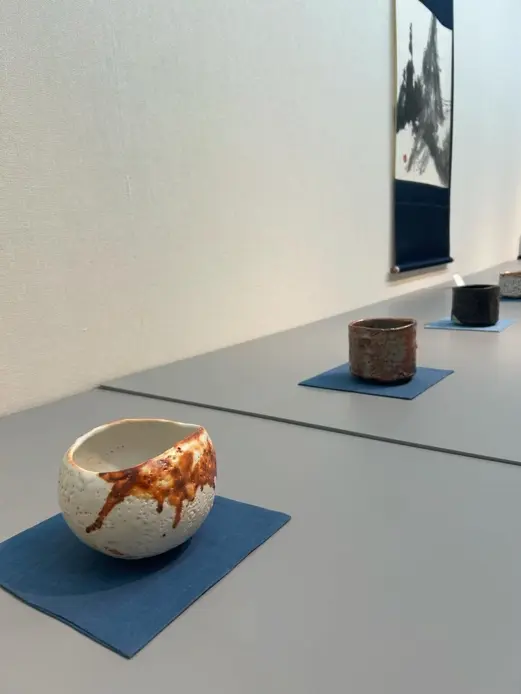
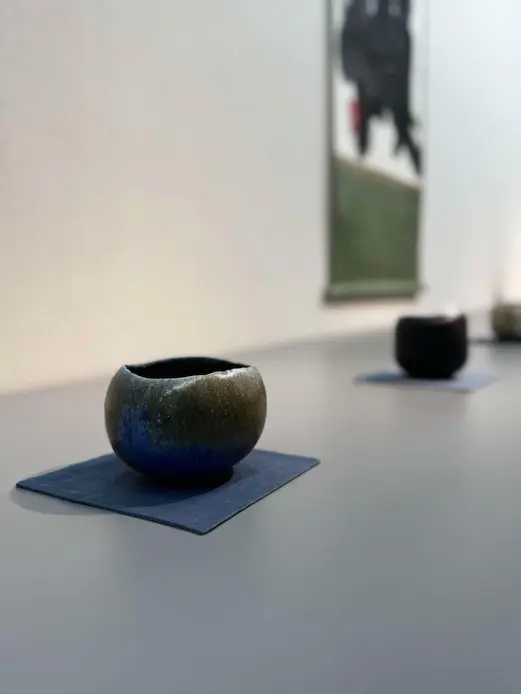
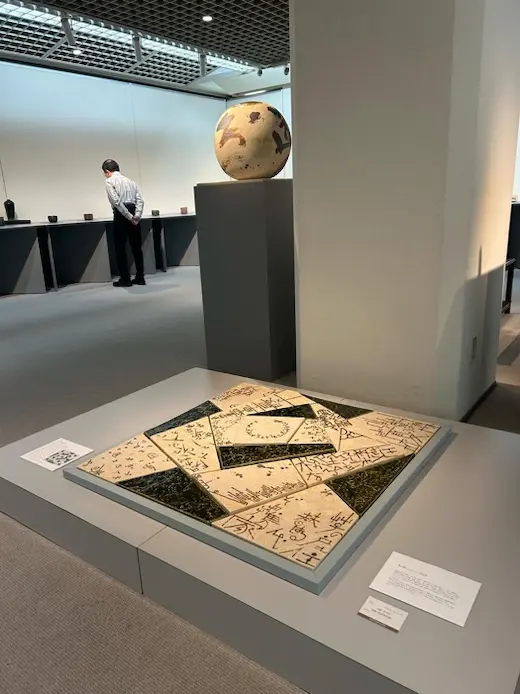
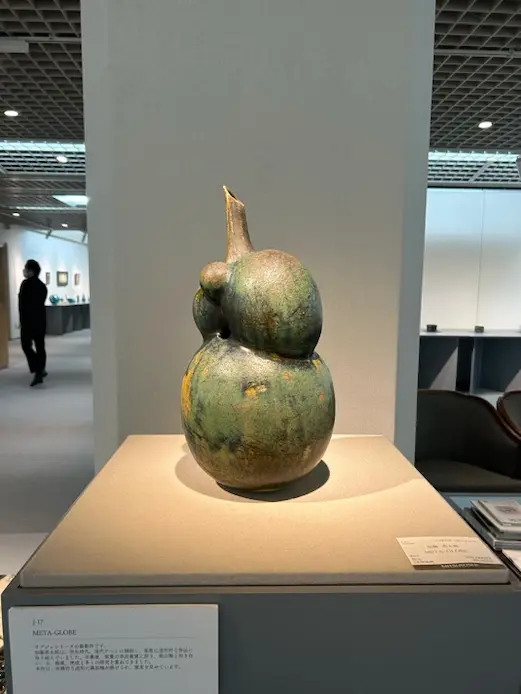
Potters before being father and son
This father and son exhibition was not prepared by two of us discussing the contents of the exhibition together. I knew what my father exhibited at the exhibition place. This time, we exhibited at the same venue, so we will see each other’s works, but I am not sure whether he has seen my past exhibitions.
It might be my father’s own experience why he doesn’t say anything about my work. In his younger days, he created objects that were innovative for that time. But he locked himself in the studio against the repeated criticism from his father and grandfather. As father and son, both of us are in active in the world of ceramics, sometimes we want to interfere with each other. However, as a ceramicist, I think my father chooses to keep quiet. This may be a comfortable distance for us.
However, during the New Year’s greetings at Kobei-gama in this year, my father suddenly said, “I want to make a place to show Ryotaro’s world.” I was surprised because I had never heard he said about my works. Probably, he had heard about the evaluation of my work, such as I won the Japan Ceramic Association Award, and this may change my father’s thought.
Two trajectories, intersecting artistic sense
I exhibited two pieces of calligraphy in this exhibition. I placed a scroll with the word “Shun,” which symbolizes the height of Mino-Momoyama pottery behind the tea bowls of Shino white and Setoguro black, which are “Shin” main. And I placed a scroll with the word “Monousi” behind the tea bowls of Oribe green and Rurikuro blue black, which are “Gyo-sho” surroundings. This word was taken from Ryokan’s poem. The meaning of the word is “Throughout my life, I do not cling to success or status, but live true to myself naturally”. I do not just concentrate on Momoyama ceramics only and I am aiming searching other way to improve myself. The way of pottery is endless way, even as you get elder, you still have to continue to face yourself hardly. Father as father, son as son, we respect each other’s individuality and live freely. I would be happy if you could feel the turning point in the lives of these two potters through this exhibition.
